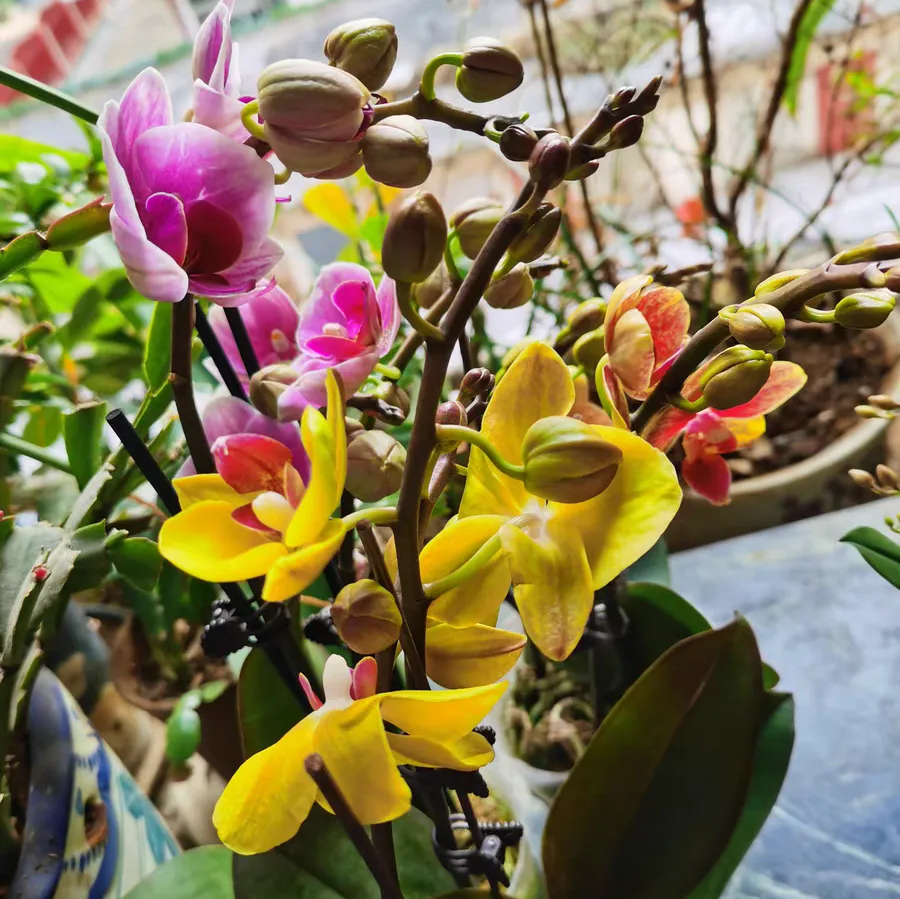Reasons Why Phalaenopsis Flowers Become Smaller When Reblooming

Share with
Phalaenopsis orchids are highly cherished by flower enthusiasts for their elegant blooms and long观赏期 (观赏期: ornamental period). However, many people encounter issues such as smaller reblooms or even a lack of flowers during cultivation.
### **Reasons for Smaller Reblooms**
1. **Nutrient Deficiency**
Phalaenopsis consumes significant nutrients during flowering, particularly the nutrients stored in its pseudobulbs. If fertilizers are not replenished promptly after the flowering period, the plant struggles to accumulate sufficient nutrients for the next round of flower bud differentiation, resulting in smaller and fewer flowers during reblooming.
2. **Temperature Issues**
Phalaenopsis is a plant that requires a "cold period," and flower bud differentiation relies on a temperature difference of about 10°C between day and night. Prolonged exposure to a constant temperature environment prevents the plant from sensing seasonal changes, thereby inhibiting flower bud formation.
3. **Root Problems**
As an epiphytic plant, Phalaenopsis has extremely high requirements for root aeration. Using non-breathable growing media or overwatering can easily cause root hypoxia and rot. When root functions are damaged, the plant’s ability to absorb nutrients decreases, directly affecting the quality of its blooms.
4. **Improper Light**
Excessive direct sunlight can scorch the leaves and inhibit flower bud differentiation, while prolonged darkness leads to insufficient photosynthesis and weakens plant growth. Appropriate light conditions are one of the key factors for successful reblooming.
### **Correct Maintenance Methods**
1. **Pruning**
After flowers wither, cut the flower spike 1 cm above the first plump bud at the base, preserving the healthy spike—some varieties can directly produce new spikes from this bud. If the spike is completely withered, prune it 2–3 cm from the base.
2. **Fertilization**
- Within one month after flowering, apply a balanced water-soluble fertilizer diluted 1500 times, watering the roots once a week.
- During the flower bud differentiation period (September–October), switch to a high phosphorus-potassium fertilizer, alternating between foliar spraying and root watering.
3. **Temperature Control**
- In northern regions, move the plant to a windowsill after October and open the window slightly at night to maintain a nighttime temperature not lower than 12°C.
- In southern regions, create temperature differences by moving the plant早晚 (早晚: morning and evening) or using a fan to simulate natural ventilation.
4. **Growing Media**
Replace the growing medium every spring (March–April). A recommended mixture is 1:1 sphagnum moss and bark to ensure good aeration.
5. **Watering**
Adopt the "dry-wet cycle" method: water only when the sphagnum moss is completely dry and the roots turn from green to white. After watering thoroughly, promptly pour out any积水 in the tray.
6. **Light Management**
- In spring, autumn, and winter, place the plant on an east or west-facing balcony to receive 4–6 hours of indirect light.
- In summer, use a shade cloth or sheer curtain to block direct midday sunlight.
In summary, by mastering the above maintenance tips and pairing them with patient, meticulous care, you can effectively improve the quality of Phalaenopsis reblooms.
Tagged in :




Leave a Reply